¿Se puede usar de forma segura una batería de vape vieja en un altavoz Bluetooth?
Con la creciente popularidad de la electrónica casera y la reutilización de baterías viejas, muchas personas se preguntan si es seguro reutilizar una batería vieja de vape en un altavoz Bluetooth. Las baterías de vape suelen ser celdas de iones de litio de alto consumo, y los altavoces Bluetooth suelen requerir un suministro de energía estable durante largos periodos. Comprender los amperios-hora es crucial al evaluar la reutilización de baterías, ya que esta métrica indica cuánta energía puede almacenar y entregar de forma segura. En esta guía, exploraremos los riesgos, las consideraciones y las mejores prácticas para el uso de baterías viejas de vape, haciendo hincapié en la importancia de los amperios-hora en el rendimiento y la seguridad de las baterías.
- Comprender los amperios-hora en baterías de vape antiguas
- Evaluación del estado de la batería y los amperios-hora
- Amperios-hora y riesgos de seguridad
- Evaluación de la compatibilidad según los amperios-hora
- Amperios-hora y protección del circuito
- Consideraciones sobre amperios-hora y carga
- Amperios-hora y diseño del gabinete
- Amperios hora y confiabilidad a largo plazo
- Amperios hora y consideraciones ambientales
- Amperios hora en configuraciones de múltiples baterías
- Reflexiones finales sobre los amperios-hora y la reutilización segura
Comprender los amperios-hora en baterías de vape antiguas
Los amperios hora (Ah) miden la carga total que una batería puede proporcionar a lo largo del tiempo. En el caso de las baterías de vapeo, esta capacidad varía considerablemente según la capacidad y el tipo de celda. Una batería estándar de iones de litio 18650 para vapeo puede ofrecer entre 2000 y 3500 mAh (2-3,5 Ah).
Por qué son importantes los amperios-hora para los altavoces Bluetooth
Los altavoces Bluetooth consumen corriente constante para los amplificadores de potencia, los LED y los chips inalámbricos. Usar una batería con amperios-hora insuficientes puede provocar una menor autonomía, caídas de tensión o incluso daños en la batería o el altavoz.
Impacto en el mundo real
Incluso si una batería de vapeo parece estar completamente cargada, sus amperios-hora efectivos pueden haber disminuido con el tiempo debido al envejecimiento, la carga frecuente y la exposición al calor. Por ello, es fundamental evaluar con precisión los amperios-hora antes de reutilizarla.
Evaluación del estado de la batería y los amperios-hora
Antes de reutilizar una batería de vaporizador vieja, es importante evaluar su estado.
Medición de la capacidad restante
Utilice un comprobador de baterías o un multímetro para comprobar el voltaje y el rendimiento de la carga. Compare los resultados con la clasificación original de amperios-hora para calcular la capacidad restante.
Identificación de la degradación
Las baterías de iones de litio se degradan con cada ciclo de carga. Una batería de vapeo que originalmente tenía 3 Ah ahora puede tener solo 2 Ah. Un menor amperaje por hora implica menos autonomía y posible inestabilidad en tu altavoz Bluetooth.
>>Ver también ¿Es posible arrancar una motocicleta con una batería de litio?
Amperios-hora y riesgos de seguridad
El uso de baterías viejas presenta varias consideraciones de seguridad.
Calentamiento excesivo
Los dispositivos de alto consumo, como los mods de vapeo, están diseñados para manejar picos de corriente. Los altavoces Bluetooth consumen menos corriente, pero una batería vieja con menos amperios-hora puede sobrecalentarse si la resistencia interna aumenta.
Cortocircuitos
Las celdas dañadas o degradadas pueden provocar un cortocircuito, lo que puede provocar un incendio o una explosión. Un aislamiento adecuado y evitar daños físicos son fundamentales.
Sobredescarga
Los altavoces Bluetooth pueden descargar por completo una batería vieja, lo que puede dañar las celdas de iones de litio, reduciendo aún más los amperios hora y la vida útil.
Evaluación de la compatibilidad según los amperios-hora
No todas las baterías de vape antiguas son aptas para altavoces Bluetooth.
Requisitos de voltaje
Asegúrese de que el voltaje de la batería coincida con el de entrada del altavoz. Una discrepancia puede reducir la eficiencia o impedir el funcionamiento del altavoz.
Igualación de capacidad
Verifique los amperios-hora para garantizar que la batería tenga suficiente autonomía. Una batería con pocos amperios podría alimentar el altavoz solo por un corto periodo.
Corriente continua vs. corriente pico
Considere las corrientes nominales, tanto continuas como de pico. Incluso si los amperios-hora son suficientes, la batería debe soportar las demandas instantáneas del altavoz de forma segura.
Amperios-hora y protección del circuito
Integrar circuitos de protección adecuados es esencial al reutilizar baterías viejas.
Sistemas de gestión de baterías (BMS)
Un BMS monitoriza el voltaje, la corriente y la temperatura. En baterías de vapeo antiguas, un BMS ayuda a prevenir sobrecargas, sobredescargas y cortocircuitos, garantizando un uso seguro de los amperios-hora.
Fusibles y cortes térmicos
Dispositivos de seguridad adicionales protegen la batería y el altavoz ante un pico de corriente repentino. Sin la protección adecuada, incluso una celda con alto amperaje por hora puede resultar peligrosa.
Consideraciones sobre amperios-hora y carga
Cargar baterías de vaporizador viejas de forma segura es fundamental.
Carga lenta
La carga lenta minimiza la acumulación de calor y conserva los amperios-hora restantes. Evite usar cargadores diseñados para mods de vapeo de alto consumo a menos que verifique el estado de la batería.
Monitoreo de voltaje
Verifique el voltaje periódicamente durante la carga para evitar la sobrecarga, que puede reducir permanentemente los amperios hora y aumentar el riesgo de eventos térmicos.
Amperios-hora y diseño del gabinete
El diseño físico del compartimento de la batería también afecta la reutilización segura.
Ventilación
Un flujo de aire adecuado ayuda a disipar el calor, preservando los amperios-hora restantes de la batería y reduciendo el riesgo de sobrecalentamiento.
Contactos seguros
Asegúrese de que los conectores estén firmes para minimizar las pérdidas de resistencia, que podrían reducir la cantidad de amperios hora efectivos entregados al altavoz.
Diseño intercambiable
Considere un diseño de batería intercambiable para celdas de vapeo antiguas, lo que permite un reemplazo fácil si las horas de amperios disminuyen con el tiempo.
Pasos prácticos para reutilizar baterías de vaporizador viejas
Paso 1: Inspeccione la batería
Compruebe si hay daños físicos, corrosión o hinchazón. Utilice únicamente celdas con carcasa intacta y voltaje estable.
Paso 2: Medir los amperios hora
Pruebe la capacidad restante bajo carga. Asegúrese de que la batería usada aún proporcione suficientes amperios-hora para su altavoz Bluetooth.
Paso 3: Agregar circuito de protección
Integre un pequeño BMS o corte de voltaje para evitar eventos de sobredescarga y sobrecorriente.
Paso 4: Asegure la batería
Coloque la batería en un soporte seguro con aislamiento y ventilación adecuados.
Paso 5: Pruebe gradualmente
Comience con periodos de uso cortos, monitoreando la temperatura, el voltaje y el rendimiento. Verifique que los amperios-hora sean suficientes para la autonomía prevista.
Escenarios reales de uso de baterías de vapeo viejas
Altavoces de baja potencia
Las baterías más antiguas con amperios-hora reducidos aún pueden alimentar de manera confiable parlantes Bluetooth pequeños y de bajo consumo.
Proyectos de bricolaje
Los aficionados pueden reutilizar las baterías de los vaporizadores para construir altavoces personalizados o cargadores portátiles, siempre que se verifiquen los amperios-hora y las medidas de seguridad.
Copia de seguridad de emergencia
Las baterías viejas con un amperaje moderado por hora pueden servir como energía de respaldo a corto plazo para dispositivos de audio portátiles.
>>Vea también ¿Pueden las pilas alcalinas contener mercurio?
Amperios hora y confiabilidad a largo plazo
Degradación a lo largo del tiempo
Las celdas de iones de litio pierden capacidad de forma natural. Los amperios-hora disminuyen con el tiempo, por lo que es fundamental supervisar la batería al reutilizarla.
Ciclo de vida
Las descargas repetidas a altas corrientes aceleran la pérdida de amperios-hora. Prevea una menor autonomía en comparación con baterías nuevas.
Expectativas de desempeño
Establezca expectativas realistas: una vieja batería de 3 Ah ahora puede proporcionar solo 2 Ah, lo que limita el tiempo de reproducción continua.
Amperios hora y consideraciones ambientales
Reciclaje de baterías viejas
Las baterías de vape usadas deben reciclarse adecuadamente para minimizar el impacto ambiental. Incluso si conservan algunos amperios-hora, es fundamental desecharlas en instalaciones designadas.
Reducción de residuos
La reutilización de baterías viejas maximiza la cantidad total de amperios hora extraídos antes de su eliminación, lo que contribuye a la sostenibilidad.
Amperios hora en configuraciones de múltiples baterías
Serie y Paralelo
Combinar baterías de vapeo antiguas en serie aumenta el voltaje, mientras que en paralelo aumenta el amperaje total. Esto permite la personalización para altavoces de mayor potencia, pero priorizando la seguridad.
Células en equilibrio
La desigualdad de amperios-hora entre celdas puede causar desequilibrio, sobredescarga o sobrecalentamiento. Combine únicamente celdas con amperios-hora restantes similares.
Reflexiones finales sobre los amperios-hora y la reutilización segura
Reutilizar una batería vieja de vape en un altavoz Bluetooth es seguro, pero es fundamental prestar atención a los amperios-hora, el estado de la batería y los circuitos de protección. Los amperios-hora determinan la autonomía, la eficiencia y si la batería puede soportar la carga del altavoz de forma segura. Mida siempre la capacidad restante, integre un sistema de gestión de baterías (BMS) y siga las prácticas de carga segura. Con las precauciones adecuadas, las baterías viejas de vape se pueden reutilizar eficazmente, prolongando su vida útil y proporcionando energía fiable. Los amperios-hora son la métrica clave para una reutilización segura y práctica, garantizando que su proyecto de bricolaje o reacondicionamiento funcione de forma fiable sin comprometer la seguridad.





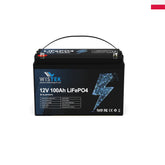

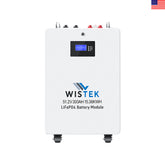
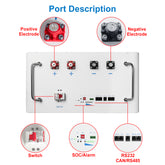
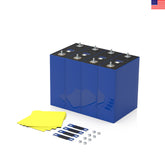
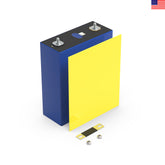
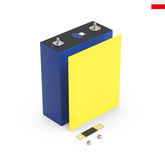

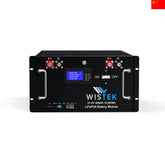
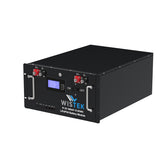









Leave a comment
All blog comments are checked prior to publishing